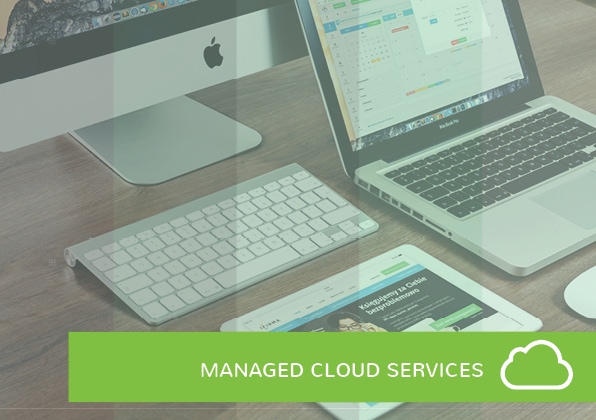Top IT Jargon that every CIO should know
The IT world is full of jargon and techy sounding words. Misunderstandings can make conversations difficult to follow, or worse, cost you money. Here’s a cheat sheet of some IT terms that you’ll likely come across when discussing improving your business’s IT systems.

Cloud: A metaphor for computing resources you access over the internet. These can be servers, data storage, and networks. You don’t need to worry about where they are or the details of how they work.
Cloud Backup: Backing up data to a remote cloud environment where it can be stored and accessed easily later on. This can be automated and is safer and more reliable than local backups.
Cloud Services: Any IT service that is accessed on demand via the internet rather than from your own computers and servers.
Public Cloud: Services offered over the internet available to anyone who wants to pay for the service. For example, Amazon Web Services falls into this category.
Private Cloud: Services offered over the internet, but only available to a single organization or to selected users.
Hybrid Cloud: A combination of public and private cloud services used in one organization or application. The two operate independently. This means protected data can be stored on a private cloud, while still having access to public cloud to run applications that use that data.
Business/Enterprise Telephony VOIP: services, but delivered on an enterprise scale for larger organizations. This includes things like conference calling, desk-to-desk calling, and music on hold.
Colocation Services: Space in a data center for a company to store and run their own IT hardware. This includes things like physical space and security, power, bandwidth, and cooling.
Microsoft Azure: A cloud service for building, deploying and managing applications on Microsoft’s cloud network and data centers.
Cloud Application: An application that is never downloaded to your computer. It is accessed through a browser via the internet.
Cloud Migration: Moving a company’s applications and data from your own computers to a cloud environment. This can be a complex process and is often done in stages.

Managed IT Services: The outsourcing of IT tasks to a specialist IT company rather than buying and maintaining IT hardware and software yourself. A service level agreement is used to determine the performance standards that must be met.
Office 365: Microsoft office applications delivered over the internet, as a cloud service. Instead of downloading and running the software yourself, you pay a subscription to access the apps over the internet.
Server: A computer program that provides services made by other programs called clients. For example, when you view a web page, your browser (the client) make a request to the server that stores that web page. The server then fulfils the request by sending the web page.
Dedicated Server: A server that has its own dedicated hardware and operating system to run on.
Virtual Server: A server that acts like a dedicated server, but shares computing hardware with other programs. You can have several virtual servers running on one physical machine, making it cheaper that using a dedicated server.
Server Hosting: Outsourcing of your servers placement and maintenance. This is one of the most common type of managed IT services.
Networking: The process of designing, building, and maintaining of computer networks.
VOIP Services: Voice over Internet Protocol is a methodology for sending and receiving voice calls over the internet. VOIP services offer this technology as a service. NETWORK SECURITY Protecting the files and computing resources on a network.
Software Asset Management: The practice of controlling and optimising the use of software in an organisation. This involves tracking licenses, ensuring compliance, reducing costs, and reducing complexity.
Software as a Service (SAAS): The highest level of cloud services. A SaaS application is already built and ready to use over the internet. You access it with your browser and don’t download or run any software. Examples include Gmail and Microsoft Office 365.
Platform as a Service (PAAS): The middle level of cloud services for users that want to build cloud applications. A platform is provided to build, deploy, and run applications, without the complexity of building and maintaining the underlying hardware or network infrastructure.
Infrastructure as a Service (IAAS): The lowest level of cloud computing. IaaS provides computing resources like storage, processing power and network capability over the internet. Companies using this service will have access to these just as if they were in their own data centre – but without having to worry about building, maintaining or scaling the system.

IT Network: A group of connected computer systems that can communicate with one another.
An IT network includes:
- Physical features such as cables and modems
- Protocols for communication
- Software to run the network
Private IP: An IP address private to a specific network. For example, on a company’s internal network. This is in contrast public IP addresses that are used on the internet.
Azure Express Route for Office 365: A service that allows companies to open up private connections between Microsoft’s data centers and your own IT infrastructure.
Managed WI-FI: A wifi network that is designed, built, and maintained by a service provider. This includes all the hardware needed, and could be for employees, guests, or students.
IT Network Consulting: A service hired to improve your IT network, including:
- Assessing your networking needs
- Testing your current system
- Building a plan to make improvements
Managed Network Devices:
Any IT networks that are built, managed, and secured by a third-party rather than by in-house staff. Network devices such as internet firewalls, routers, network switches, and hubs that are managed and maintained by a service provider.

Hosted IP-PBX: A PBX (Private Branch Exchange) is a private network within a company for communicating internally and with the outside world. A hosted IPPBX system is built and maintained by a hosting service provider and accessed by the company over the internet.
SIP Trunking: A method of delivering phone services to a business over the Internet, rather than over a traditional phone line. This service is delivered by SIP providers and is usually considerably cheaper.
VOIP services/IP Telephony: Voice over Internet Protocol is a methodology for sending and receiving voice calls over the internet. VOIP services offer this technology as a service.

Network Security: Protecting the files and computing resources on a network.
Cyber Security: Protecting computer systems from cyber threats. This includes protecting hardware, software, and data from theft or disruption.
Phishing: Using fake emails or websites to trick users into giving up passwords and personal information.

SDLC (Systems Development Life Cycle): The process of designing, testing, and deploying an IT system. This could involve hardware, software, or both. Also known as Application Development Life Cycle.
P2P protocol: A decentralised protocol where each party has equal privileges in a network and can communicate with any other party. This is in contrast to the client/ server model, where servers fulfil client requests.
Patch management: A patch is a ‘make-do’ solution to a software problem. Patch management involves deciding what patches are appropriate, installing them, and testing a system afterwards.
Virtualization technologies: A virtual version of a device or resource such as a storage device, server, or operating system. It acts and works like a physical device, but is just a software virtualization. Many virtual devices can be run on the same physical device and be replicated easily.
ITcQ (IT Competitiveness Quotient): It helps to gauge the value and effectiveness of IT in their operations, management and functioning of the company. The IT system in a company is divided into seven components and each of them is measured to determine the company’s competitive advantage and disadvantage against their competition.
IT Governance: A type of corporate governance focused on IT systems. Specifically managing the risk and performance of IT systems, to make sure they align with the company’s goals and strategies.
VPN/IP-VPN: A Virtual Private Network is a method to increase privacy while using a public network like the Internet. It could be used by employees to securely access a company’s network while at home.
There are many more, but these are a great place to start. Just remember, techies don’t always realise when they are speaking in jargon, so please don’t hesitate to ask what something means!
You can download the pdf version for your reference.
Got any Questions?
We listen and learn to understand your business challenges, so we can deliver effective solutions that meet your specific business needs. Speak with an expert now!


